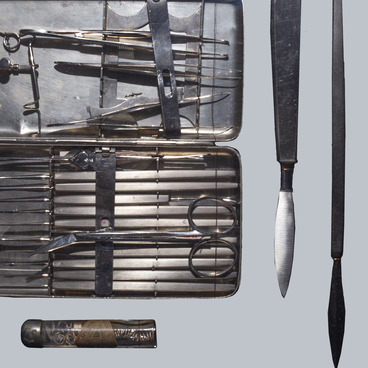Hospital trains appeared in Russia in the second half of the 19th century. They became widespread with the development of railroads. For example, during the Russo-Japanese War, they transported over 87,000 wounded and sick from the Russian Far East to the deep rear area.
Hospital trains also operated during World War I but came to particular prominence and transported the largest number of wounded during the Great Patriotic War. Between 1941 and 1945, hospital trains served not merely as a means of evacuation, but as actual “hospitals on wheels”. They helped save hundreds of thousands of lives.
Aboard these trains, doctors performed surgery, provided medical treatment, and conducted physical therapy sessions. The trains were fitted with the latest technology, including fully equipped surgery cars, bandaging rooms, pharmacies, and warehouses. There was also a separate car for the train crew and a kitchen car where meals were prepared for the wounded.
The crew of every hospital train offered its own initiatives — suggestions on how to optimize the operations and improve the quality of accommodation, catering, and leisure time of the sick and wounded. For example, vegetable gardens with greenery were placed on the roofs of the train cars. Chickens and pigs were kept under the cars. The crew ensured that the train was perfectly clean as was necessary for treating the wounded.
The hospital trains were numbered and assigned to the medical evacuation stations. Among them were temporary ambulance trains which evacuated the wounded from the frontline areas to the army hospitals in the nearest rear. The other type was permanent hospital trains which evacuated the wounded from the army hospitals to the deep rear areas.
There were 150 permanent and 138 temporary ambulance trains. The hospital train model from the museum’s collection has a scale of 1:10. It is equipped with miniature berths for the sick and wounded, which are arranged in three tiers. Such cars were widely used in hospital trains during the Great Patriotic War.
Hospital trains also operated during World War I but came to particular prominence and transported the largest number of wounded during the Great Patriotic War. Between 1941 and 1945, hospital trains served not merely as a means of evacuation, but as actual “hospitals on wheels”. They helped save hundreds of thousands of lives.
Aboard these trains, doctors performed surgery, provided medical treatment, and conducted physical therapy sessions. The trains were fitted with the latest technology, including fully equipped surgery cars, bandaging rooms, pharmacies, and warehouses. There was also a separate car for the train crew and a kitchen car where meals were prepared for the wounded.
The crew of every hospital train offered its own initiatives — suggestions on how to optimize the operations and improve the quality of accommodation, catering, and leisure time of the sick and wounded. For example, vegetable gardens with greenery were placed on the roofs of the train cars. Chickens and pigs were kept under the cars. The crew ensured that the train was perfectly clean as was necessary for treating the wounded.
The hospital trains were numbered and assigned to the medical evacuation stations. Among them were temporary ambulance trains which evacuated the wounded from the frontline areas to the army hospitals in the nearest rear. The other type was permanent hospital trains which evacuated the wounded from the army hospitals to the deep rear areas.
There were 150 permanent and 138 temporary ambulance trains. The hospital train model from the museum’s collection has a scale of 1:10. It is equipped with miniature berths for the sick and wounded, which are arranged in three tiers. Such cars were widely used in hospital trains during the Great Patriotic War.


